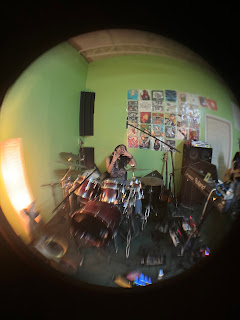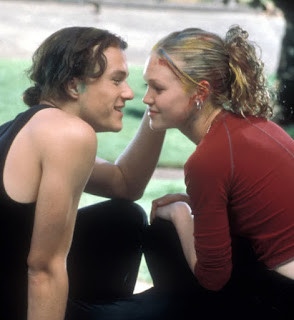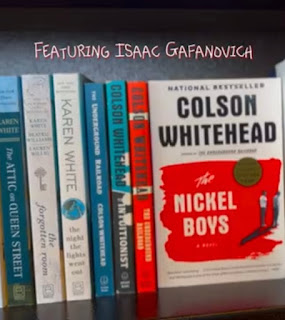Critical Creative Reflection
How does your product use or challenge conventions AND how does it represent social groups or issues?
Our rock music video employs various conventions to convey their messages and represent different social groups. Through energetic performances, rebellious aesthetics, and edgy visuals, rock music videos capture the essence of the genre while appealing to fans and attracting new audiences. These videos often showcase the musicians as a distinct social group, embodying a rebellious spirit and countercultural identity. We tried our best to use these conventions in our video. We tried to dress more edgy than we usually did, wearing old band shirts. We made silly faces directly into the camera, almost mocking the audience. This was meant to show slightly rebellious spirits, similar to the conventions of most nineties rock music videos. We added quick cutaways into the video to different smaller inserts. This is a convention of most rock music to be stupid and cut tension throughout. They may also feature diverse fan communities, highlighting the inclusive nature of rock music and its ability to bring people from different backgrounds together. By using conventions such as intense visuals, symbolic imagery, and powerful storytelling, rock music videos create a powerful representation of social groups within the genre. We tried to recreate this as much as possible by telling the story of a break up. This is a very common trope that almost every single person has been through, or knows someone who has been through a break up. This allows all people from many different social groups to feel compelled by our music video and make everybody understand our video.
How does your product engage with audiences AND how would it be distributed as a real media text?
Rock music videos have a unique ability to captivate and engage audiences through their dynamic visuals, compelling narratives, and powerful performances. These videos create a sensory experience that resonates with fans and leaves a lasting impact. By combining the raw energy of the music with striking visuals, rock music videos create an immersive experience that appeals to both the auditory and visual senses. One way our rock music video engages audiences is through the use of storytelling. The video often features narratives that complement the lyrics of the song, creating a deeper emotional connection with the audience. Our story of love and personal struggle gives the video an extra layer of meaning to the music, allowing the viewers to relate and connect with the song on a more profound level. In addition to storytelling, our music video also employs visually captivating elements. While we do not have elaborate sets and costumes or stunning cinematography and special effects, our video still tries to create a visual spectacle that grabs the viewer's attention. The high-energy performance of the actors in our video, combined with the dynamic editing and camera work, further enhance the excitement and intensity of the video, hopefully keeping the audience engaged from start to finish. The general distribution of rock music videos has evolved significantly with the rise of the internet and social media. Nowadays, these videos are primarily shared and consumed online through platforms such as YouTube, Vevo, and social media channels. This allows for a wider reach and accessibility to audiences worldwide. Platforms like Spotify, Apple Music, and Tidal not only offer audio streaming but also feature a wide selection of music videos, allowing fans to enjoy their favorite rock bands visually as well. We would most likely use these exact platforms to spread our video, as these sites are widely known and used by teenagers, our most probable audience. Uploading our music video to Youtube is completely free and very simple, so that would be our first plan of action.
How did your production skills develop throughout this project?
My production skills most definitely grew throughout this project. Before this project, I had never been to a real recording studio. Sammie’s dad brought me in and showed me around the place. He gave me a full tour of all the equipment, the pedals, the cables. He had a full sound board where he could easily play Say It Ain’t So. The sound was so clear and it had me extremely intrigued at how the speakers worked. In our final run, where I actually had to sing, I did learn about how to properly use microphones so they do not squeak in my face. I got to watch Isaac tune his bass and Amelie try out different things on drums. They kept talking about how clean the sound was, and I couldn’t help but be curious what that meant. They explained it to me in great detail and I felt so grateful! I also learned how to edit. Sammie helped show me the correct way to use iMovie. It was a struggle at first, but I finally got it. I even made some edits myself without Sammie’s help. I now know how to add inserts on top of a larger clip without cutting off the original clip. I also know how to make the sound louder and softer. If you cut the sound into many small clips and then just turn up the percent of volume in each one, it gives the effect of the sound growing gradually. It was a really cool experience to learn the mechanisms behind making videos.
How did you integrate technologies – software, hardware and online – in this project?
Technology played a crucial role in the production of our music video, allowing us to bring the creative vision to life. From pre-production to post-production, various technological tools and techniques were utilized to enhance the visual and auditory aspects of the video. During pre-production, technology is used for storyboarding, planning camera movements, and creating visual effects concepts. We planned our scenes online first, so that gave us an idea of what we wanted our visuals to look like. When it came to filming, our iPhone cameras have advanced features like slow-motion, time-lapse, and high-resolution capabilities, enabling us to achieve the desired visual effects. In post-production, we used editing software to assemble the shots, add special effects, and synchronize them with the music. We also used color grading techniques to enhance the visual aesthetics and create a specific mood. Additionally, audio editing software is used to mix and master the music, ensuring optimal sound quality. Technology helped us so much throughout the process of this video and we could not have made it without the help of it.



Comments
Post a Comment